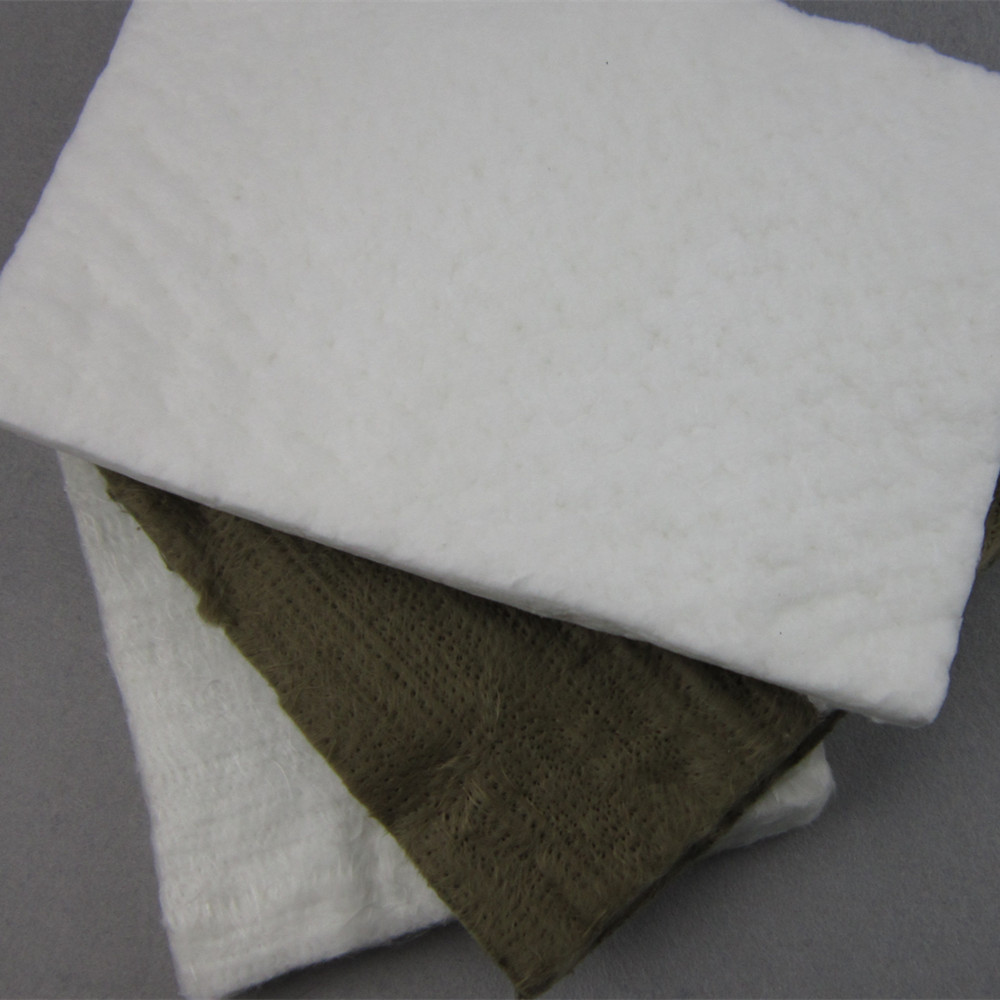1. Silica Needle Mat
-
Material Base: Pure amorphous silica fibers (≥96% SiO₂ content), processed into a dense, needled structure.
-
Thermal Performance:
-
Continuous Use: 1000°C (1832°F), with short-term tolerance up to 1260°C (2300°F).
-
Minimal linear shrinkage (<2%) at 1000°C, ensuring long-term dimensional stability.
-
-
Key Advantages:
-
Chemically inert: Resistant to acids, alkalis, and oxidation even in extreme heat.
-
Ultra-low thermal conductivity (0.035–0.045 W/m·K) for superior heat retention.
-
Non-combustible (Class A fire rating) and zero volatile emissions.
-
-
Typical Use Cases:
-
High-temperature exhaust components (turbochargers, headers, racing exhaust systems).
-
Critical thermal shielding in aerospace, foundries, and power generation.
-
2. Fiberglass Needle Mat
-
Material Base: E-glass fibers (calcium-aluminoborosilicate glass) bonded into a flexible mat.
-
Thermal Performance:
-
Continuous Use: 450–550°C (842–1022°F), with some modified grades surviving brief exposure to 700°C (1292°F).
-
-
Key Advantages:
-
Cost-efficient: ~50–70% cheaper than silica-based solutions.
-
Excellent sound absorption (NRC 0.65–0.85) for noise reduction in exhaust systems.
-
Easily cut and molded to fit irregular surfaces (density: 60–100 kg/m³).
-
-
Limitations:
-
Gradual fiber embrittlement above 500°C, risking particulate release.
-
Potential formaldehyde release in humid, high-heat environments (requires UL GREENGUARD certification).
-
Direct Performance Comparison
| Parameter | Silica Needle Mat | Fiberglass Needle Mat |
|---|---|---|
| Peak Temperature | 1260°C (2300°F) | 700°C (1292°F) short-term |
| Thermal Conductivity | 0.035–0.045 W/m·K | 0.05–0.08 W/m·K |
| Chemical Resistance | Exceptional (pH 1–14 stable) | Moderate (degrades in strong acids) |
| Acoustic Damping | Limited (NRC 0.3–0.4) | High (NRC 0.7–0.85) |
| Lifespan at 600°C | 10+ years | 2–5 years |
Application Recommendations
-
Turbocharged/Diesel Exhausts:
-
Use silica mats near turbos/DPFs where gas temps exceed 800°C.
-
Fiberglass suits tailpipes/mufflers (<500°C).
-
-
Weight-Sensitive Designs:
-
Silica: Higher cost but 30% lighter than ceramic fiber alternatives.
-
Fiberglass: Budget-friendly for non-critical thermal zones.
-

-